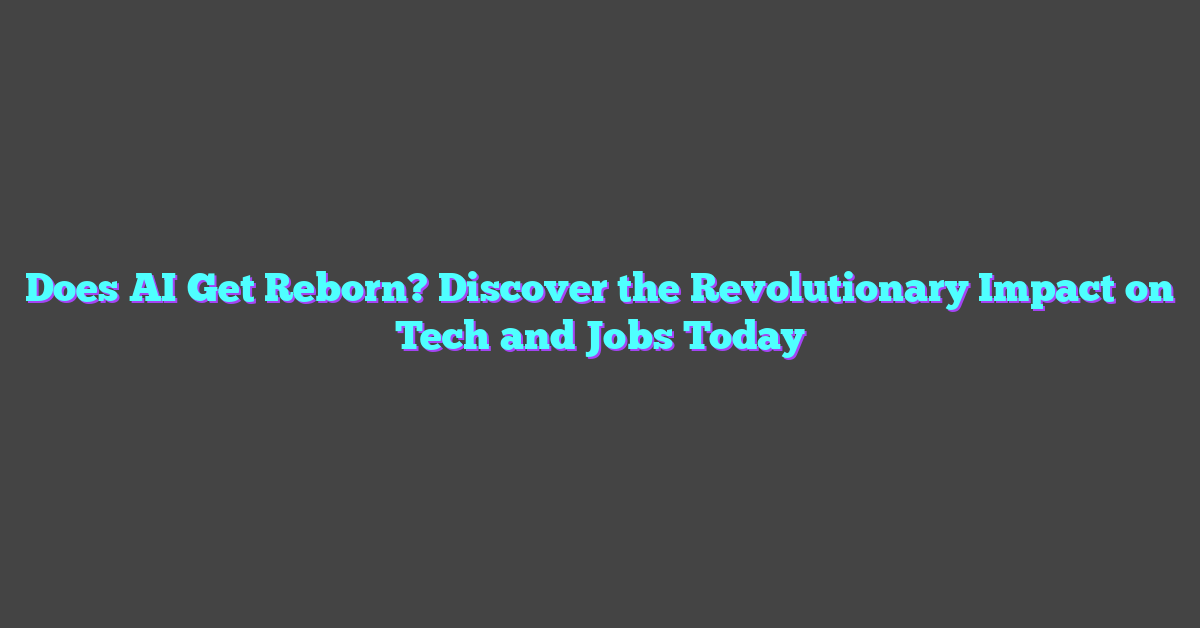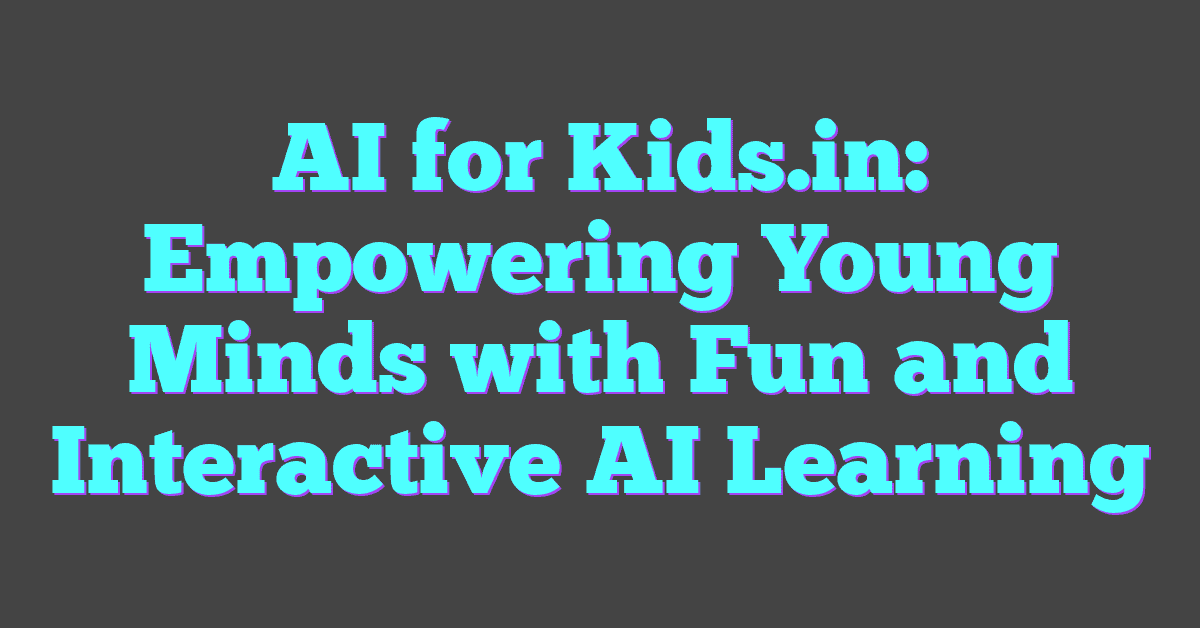Artificial Intelligence, or AI, often feels like a concept pulled straight from science fiction. Yet, it’s become an integral part of our everyday lives, from voice assistants to recommendation algorithms. But what happens to AI when it reaches the end of its usefulness or needs an upgrade? Does it simply fade into obsolescence, or can it be reborn in a new form?
This intriguing question opens up a world of possibilities and ethical considerations. As AI continues to evolve, understanding its lifecycle and potential for “rebirth” could shape how we interact with and depend on these intelligent systems. Dive into this exploration of AI’s journey beyond its initial creation and discover what the future might hold.
Understanding the Concept of AI Rebirth
AI rebirth refers to the process of transforming an outdated or less effective AI system into a new, improved form. This transformation often involves upgrading the AI’s algorithms, integrating new data, or adopting advanced machine learning techniques.

What Does AI Rebirth Mean?
AI rebirth means repurposing or upgrading an existing AI system to enhance its capabilities or extend its utility. When technologies evolve, AI systems need updates to maintain relevance. For instance, an AI chatbot deployed in 2010 had limited natural language processing abilities compared to today’s standards. Through rebirth, this AI can leverage modern algorithms and datasets to provide more accurate and human-like interactions.
Historical Perspectives on AI Development and Rebirth
AI development has historically followed cycles of innovation and obsolescence. In the 1950s, AI began with symbolic reasoning and rule-based systems, which scientists later deemed limited as machine learning emerged. During the 1990s, AI shifted towards neural networks and data-driven approaches. With the advent of deep learning in the 2010s, earlier models saw rebirth through advanced neural architectures and big data.
Consider the example of computer vision systems. Early models relied on handcrafted features and predefined rules. Modern systems use convolutional neural networks (CNNs), surpassing old methods in accuracy and performance. Existing systems underwent rebirth through the adoption of these advanced techniques.
AI rebirth represents a continuous cycle of improvement and adaptation, driven by technological advancements and new research in the field. These transformations ensure AI remains effective and relevant in an ever-changing digital landscape.
Technological Foundations of AI Rebirth
Advancements in AI are rewriting the rules of what’s possible, with AI rebirth being a key part of this transformation. Technologies driving this phenomenon ensure older AI systems gain new life, enabling them to meet modern demands.
Key Technologies Enabling AI to Be “Reborn”
Several core technologies propel AI rebirth. Improvements in hardware, such as Graphics Processing Units (GPUs) and Tensor Processing Units (TPUs), provide the necessary computational power. Enhanced computational power allows complex models to process vast data efficiently.
Frameworks and libraries like TensorFlow and PyTorch streamline AI development. By offering pre-built modules and tools, these frameworks simplify implementing sophisticated algorithms.
Natural Language Processing (NLP) advances have revolutionized AI. Techniques like BERT (Bidirectional Encoder Representations from Transformers) aid in understanding context, resulting in more accurate and meaningful interactions.
The Role of Machine Learning and Neural Networks
Machine learning (ML) and neural networks are integral to AI rebirth. Machine learning algorithms adapt by learning from data, continually refining their performance. Support Vector Machines (SVMs) and Random Forests are examples that showcase flexibility through iterative learning.
Neural networks, especially deep learning models, push AI capabilities further. Convolutional Neural Networks (CNNs) excel in image recognition tasks, enabling AI to process visual data with human-like accuracy. Recurrent Neural Networks (RNNs) handle sequential data efficiently, benefiting tasks like language translation.
Transfer learning accelerates AI rebirth. By leveraging pre-trained networks, AI systems quickly adapt to new tasks, reducing the time and data needed for retraining.
Through these technological advancements, AI systems undergo a continuous evolution, ensuring they meet the ever-changing technological landscape.
Implications of AI Rebirth
AI rebirth holds significant potential for reshaping various sectors. This section explores its ethical considerations, as well as its impact on industry and employment.
Ethical Considerations
Ethical considerations surrounding AI rebirth are complex. Revamping older AI models often raises questions about data privacy. Enhanced AI systems usually require vast datasets, potentially risking user information. Ensuring compliance with regulations like GDPR and CCPA becomes critical. Moreover, transparent AI decision-making is vital. When AI systems become more advanced, understanding their decision pathways helps maintain accountability. Fairness in AI algorithms is another concern. As models improve, avoiding biases becomes a pressing issue, especially in sectors like healthcare, finance, and the legal system.
Impact on Industry and Employment
The impact of AI rebirth on industry and employment is profound. Advanced AI systems revolutionize sectors like healthcare, finance, and manufacturing. For example, predictive analytics in finance enhances fraud detection, while machine learning in healthcare improves diagnostic accuracy. These innovations improve efficiencies but also pose challenges for the workforce. Automation and AI-powered tools often replace repetitive tasks, leading to job displacement in certain areas. However, new job opportunities in AI development and data science emerge, requiring upskilling and continuous learning. It’s essential for workplaces to adjust, incorporating AI training programs that equip workers with relevant skills for future roles.
AI rebirth, driven by continuous improvement and technological advancements, reshapes ethical landscapes and transforms industry dynamics.
Future Prospects of AI Rebirth
AI rebirth promises transformative innovations and challenges. Ongoing research and advancements provide a glimpse into the future landscape of AI.
Innovations on the Horizon
Several innovations could redefine AI capabilities. Quantum computing stands out, offering immense computational power to solve complex problems traditional computers can’t handle. Quantum algorithms enable breakthroughs in machine learning, optimizing tasks like data encryption and pattern recognition. Edge AI, which processes data locally rather than in centralized servers, reduces latency and enhances privacy, proving beneficial in applications like autonomous vehicles and IoT devices.
Further innovations include explainable AI (XAI). XAI focuses on creating transparent AI models, making decision-making processes more interpretable. This transparency builds trust among users, particularly in applications requiring critical decisions such as healthcare diagnostics and financial services. Self-healing AI systems, which can autonomously identify and fix problems, are also emerging. These systems enhance reliability and reduce downtime by leveraging advanced anomaly detection techniques.
Potential Challenges and Solutions
AI rebirth faces several challenges. One significant issue is data privacy. As AI systems become more advanced, the data they process grows in volume and sensitivity. Addressing this involves implementing robust data protection frameworks and leveraging technologies like differential privacy, which allow data analysis without compromising individual privacy.
Bias in AI models remains a critical concern. Unintended biases can lead to unfair outcomes, especially in areas like hiring and law enforcement. Solutions include developing and deploying bias detection algorithms, as well as fostering diverse data sets to ensure AI systems are trained on representative data. Regulatory frameworks and guidelines also play a pivotal role in ensuring ethical AI practices.
Scalability challenges arise as AI systems become more complex. Efficient resource management becomes crucial, particularly for large-scale deployments. Innovations like federated learning, which distributes learning across multiple devices, improve scalability while maintaining performance. Collaboration between researchers, industry, and policymakers ensures that AI continues evolving responsibly, addressing challenges as they arise.
These innovations and challenges suggest that while AI rebirth holds great promise, ongoing vigilance and innovation are crucial.
Conclusion
AI’s journey of rebirth is a testament to the relentless pursuit of innovation. With each upgrade and new approach, AI becomes more capable and adaptable, ready to tackle the challenges of a dynamic world. The blend of technological advancements and ethical considerations ensures that AI not only grows smarter but also more responsible.
Industries are witnessing transformative impacts, and while there are challenges, the potential benefits are immense. The future of AI holds exciting prospects, from quantum computing to self-healing systems, promising even greater leaps in capability. As AI continues to evolve, staying informed and vigilant will be key to harnessing its full potential.
Frequently Asked Questions
What is AI rebirth?
AI rebirth refers to the process of upgrading outdated AI systems with modern technological advancements to enhance their efficiency and capabilities. This continuous improvement cycle ensures that AI systems remain effective in an ever-evolving digital landscape.
What are some historical approaches to AI?
Historical approaches to AI include symbolic reasoning, neural networks, and deep learning. Each approach has contributed to the development and enhancement of AI over the years, laying the foundation for current advancements.
How do advancements in hardware support AI rebirth?
Advancements in hardware, such as more powerful processors and specialized AI chips, provide the computational capacity necessary for running complex AI algorithms and models, thus supporting the continuous improvement and functionality of AI systems.
What are TensorFlow and PyTorch?
TensorFlow and PyTorch are frameworks used for developing and deploying machine learning models. They are particularly known for their utility in building neural networks and deep learning models, which are central to modern AI applications.
What role does NLP play in AI rebirth?
Natural Language Processing (NLP) techniques, such as BERT, enhance AI’s ability to understand and generate human language, making interactions with AI systems more intuitive and effective. This is a key component of modern AI advancements.
How do machine learning algorithms enhance AI capabilities?
Machine learning algorithms enable AI systems to learn from data, identify patterns, and make decisions. This ability to learn and adapt is crucial for improving AI performance and expanding its applications across different domains.
What is transfer learning?
Transfer learning involves using a pre-trained model on a new, but related task, which accelerates the development process. This technique enables quicker adaptation and deployment of AI systems to various tasks, improving efficiency.
What are the ethical considerations in AI rebirth?
Ethical considerations in AI rebirth include data privacy, bias in AI models, and transparency in decision-making processes. Addressing these issues is essential to maintaining public trust and ensuring responsible use of AI technologies.
How does AI rebirth impact industry and employment?
AI rebirth revolutionizes sectors like healthcare and finance by automating tasks and improving accuracy. However, it also poses challenges for the workforce, potentially leading to job displacement and necessitating reskilling and upskilling efforts.
What are the future prospects of AI rebirth?
Future prospects of AI rebirth include innovations like quantum computing, edge AI, explainable AI, and self-healing AI systems. These advancements promise to further transform industries and improve the robustness and capability of AI systems.
What challenges must be addressed in AI rebirth?
Challenges in AI rebirth include ensuring data privacy, mitigating bias in AI models, and improving scalability. Addressing these issues requires ongoing vigilance and innovation to maintain the effectiveness and ethical standards of AI technologies.




